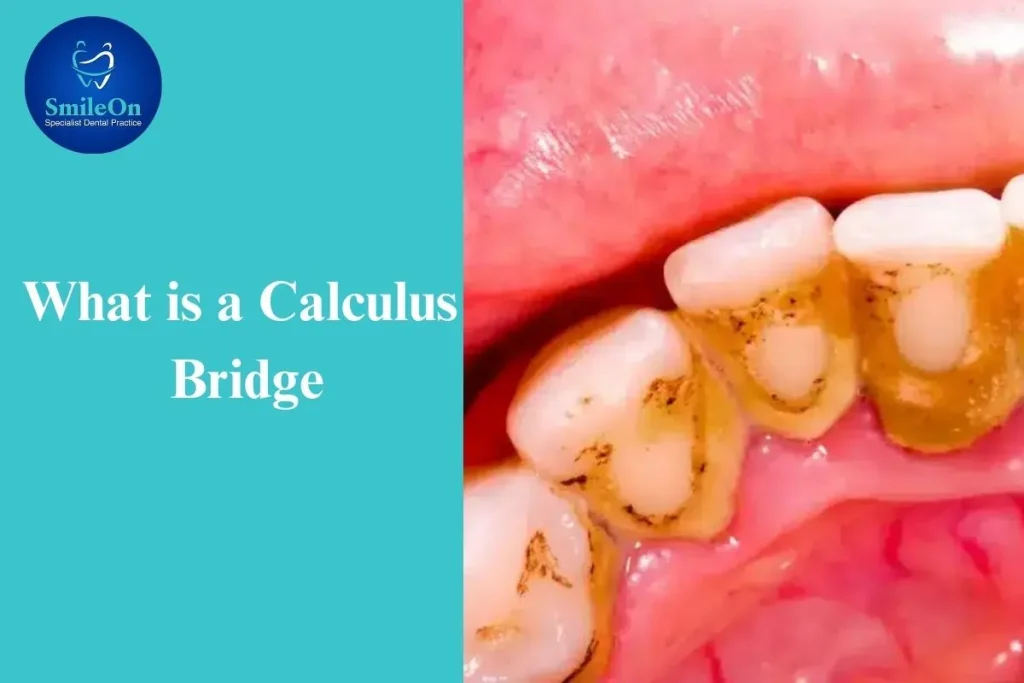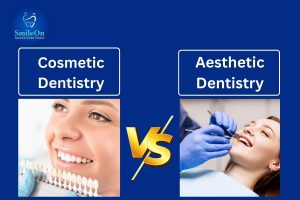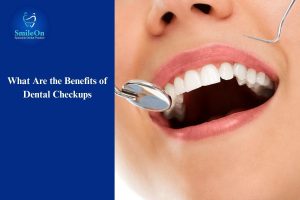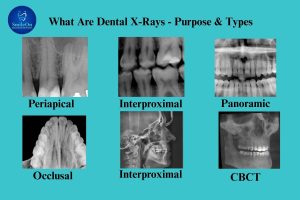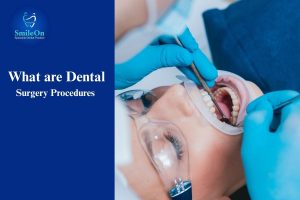The calculus bridge is one of the greatest problems, but it is most neglected when it comes to teeth. Some people concentrate only on the mouth holes and gum issues, but they are not aware of hardened plaque, professionally referred to as calculus. That may accumulate to the extent that it degenerates to create a dense mass that unites teeth together; this is the calculus bridge teeth condition.
Otherwise, aside from its impact on your smile, it causes gum disease, tooth decay and even loss of teeth. So, keep reading as we are going to deconstruct what you need to know about a mouth calculus bridge: its symptoms, how to cure it, and what can be done to prevent it.
Table of Contents
ToggleWhat is Calculus Bridge?
A calculus bridge refers to a dark yellowish or brownish accumulation of a hard substance that accumulates on the teeth whenever plaque is not cleared by brushing and flossing. With time, the plaque forms tartar (calculus) when minerals in the saliva harden the plaque. When this tartar becomes hard, it will connect a series of teeth together, almost like a bridge.
It is not that minor, and it is actually a manifestation of bad oral health and can be a precursor to worse dental illnesses like gum disease, infections and tooth loss. A teeth calculus bridge, unlike ordinary plaque, is not brush-able at home, and you will require professional dental cleaning.
Calculus Bridge Symptoms
Initially, the formation of calculus may appear as yellow or brownish spots around the gums. When it deteriorates, however, and develops a bridge of calculus in the mouth, you are apt to take notice of:
- Observable hard deposits: crusty-like deposits between teeth.
- Gum irritation: Puffiness of the gums, redness and bleeding.
- Bad breath (halitosis): Bad smell even after brushing.
- Sensitive teeth: Pain on eating hot/ cold or sweet foods.
- Drooping teeth: The loosening of the teeth is due to the denudation of the gums and the decrease in bones sustaining them by the constant accumulation of tartar.
- Tartar between your teeth: The spaces between your teeth appear to be filled in with hardened material.
Recognizing these tell-tale symptoms, be quick to seek treatment before it progresses to gum disease.
How Plaque Creates a Calculus Bridge?
One of the teeth calculus bridges does not occur overnight; it is a byproduct of long-term development of the plaque, which is not taken care of. Whenever you take food, food particles, saliva, and bacteria in the mouth mix to produce a sticky layer called plaque. Unless this plaque is subsequently brushed off in 24 to 48 hours, it starts to solidify with minerals such as calcium and phosphate in saliva, depositing into it.
With time, this impacted layer calcifies to become tartar (calculus), even harder to dislodge. As long as tartar is not professionally cleaned, it may extend to neighboring teeth, ultimately bridging the gap between the teeth in a condition known as a mouth calculus bridge.
Side Effects of Calculus Bridge Teeth:
A calculus bridge teeth problem that is overlooked may provoke various troubles in oral health, including:
- Gum disease (gingivitis & periodontitis): Tartar causes irritation to the gums and causes inflammation and bleeding.
- Bone loss: During the advanced stages of gum disease, the teeth-supporting jawbone is destroyed.
- Receding gums: This causes the gums to detach from the teeth, revealing the roots.
- Tooth loss: Severe cases may result in loosening of teeth and their fall.
- Tooth decay: Tartar will harbor bacteria that feed on the teeth’s enamel.
- Constant bad breath: The bacteria that decay in the tartar produce odorous gases.
It may appear there is only a cosmetic buildup; however, teeth calculus bridge functions as a danger signal of more grandiose oral health hazards.
How to Avoid Mouth Calculus Bridge
It is better to prevent than to treat. Here are the habits you should incorporate into your daily life in order to prevent the development of mouth calculus bridge:
- Maintain frequent brushing, using fluoride toothpaste.
- Brush and floss at least once a day to get rid of the trenches between the teeth.
- Take an antibacterial mouthwash to decrease the amount of bacteria.
- Follow a balanced diet that contains little sugar and acidic foods.
- Do not smoke, as it increases the rate of buildup of tartar.
- See your dentist once every 6 months to be professionally cleaned.
To make sure that your teeth never develop a build-up of tartar, maintaining consistent oral hygiene would be the best possible thing you can do.
Treatment Options For Teeth Calculus Bridge
Sadly, calculus bridge teeth cannot be removed using home remedies, especially after it has developed. Treatment by a dental expert is required. The typical options are:
- Scaling and Root Planing: The dentist applies special tools to remove tartar above and below the gum.
- Ultrasonic Cleaning: The hardened deposits are broken up through vibrations, after which they are polished to smooth the enamel.
- Laser Therapy: Advanced therapies utilize lasers to remove calculus and destroy the bacteria.
- Surgical Cleaning (in severe cases): It is done in the event that the accumulated tartar occurs too far below the gum.
Treatment is easier with early detection. Failure to treat on time will aggravate the mouth calculus bridge, and more invasive measures will be needed.
FAQs
Is calculus bridge harmful?
Yes, a calculus bridge is harmful since it causes gum disease, tooth decay and even the loss of the tooth in case not caught at the right time.
Can teeth rot under a bridge?
Indeed, teeth may rot beneath the development of tartar or under dental bridges in case of the absence of appropriate cleaning. The bacteria left behind attack the teeth to rot.
What causes a calculus bridge?
A calculus bridge occurs due to plaque that does not get removed before it hardens to form tartar that cements the tooth together. However, poor diets, smoking, and oral hygiene worsen it.
Conclusion
A calculus bridge is not something to overlook; it is a severe dental issue indicating poor oral hygiene and may cause severe gum and tooth conditions. The good news is?
Your smile can be saved with proper care, frequent brushing and flossing and a visit to the dentist at SmileOn and by not allowing teeth calculus bridge to form.
Therefore, when you realize some strange accumulation on your teeth next time, do not postpone your visit to the dentist. Taking care of your mouth shows you care, and avoiding mouth calculus is a major step toward healthy, lifelong oral health.


